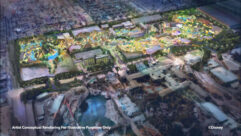Environmental Impact
Making AV gear and applications eco-friendly in a green building.
Joining a current construction trend, the David Letterman Communication and Media Building is the second building on Ball State University’s campus that has applied for Leadership in Energy and Environmental Design (LEED) Certification. This includes using recycled materials in the building, energy recovery and optimization of building systems, and overall reductions in carbon emissions. But how does LEED affect the AV equipment?
As a systems integrator, Tom Voigts, vice president of sales for Roscor Corp. in Chicago, says his company checks if the client’s power requirements and heat lodes are appropriate for the equipment they are installing. “We also make sure the equipment turns off in an appropriate manner when not in use,” he says. For example, equipment powering on and off every 30 minutes versus every five or six hours may have an adverse effect on the equipment components. From the standpoint of the integrator and the client, Voigts says it is also important to make sure the LEED requirements don’t affect the capabilities of the AV equipment.
Material used during the installation, such as adhesives for carpeting or sound absorption panels and lighting, can be specified to be LEED appropriate. In the Letterman building, the equipment consoles housing some of the AV equipment was made of bamboo, a renewable resource.
Dan Lutz, associate director of University Teleplex, says that reducing its computers in each classroom from a PC and a Mac to an iMac with a dual-core processor and using one monitor on the console instead of two has less of an impact on the environment because of the overall reduction in energy use. “But that was not based on LEED certification,” he says. “It just so happens that the technology allowed us to do that. The added benefit is it falls into that category.”
In the classrooms, Lutz says Epson projectors were installed. “We looked at projectors that provide as much ANSI lumens as we can, but the low and medium lights in the rooms are much more efficient, so we can reduce the ANSI lumens, which means less power consumption,” he says. “It was an afterthought, but every little bit helps.”










